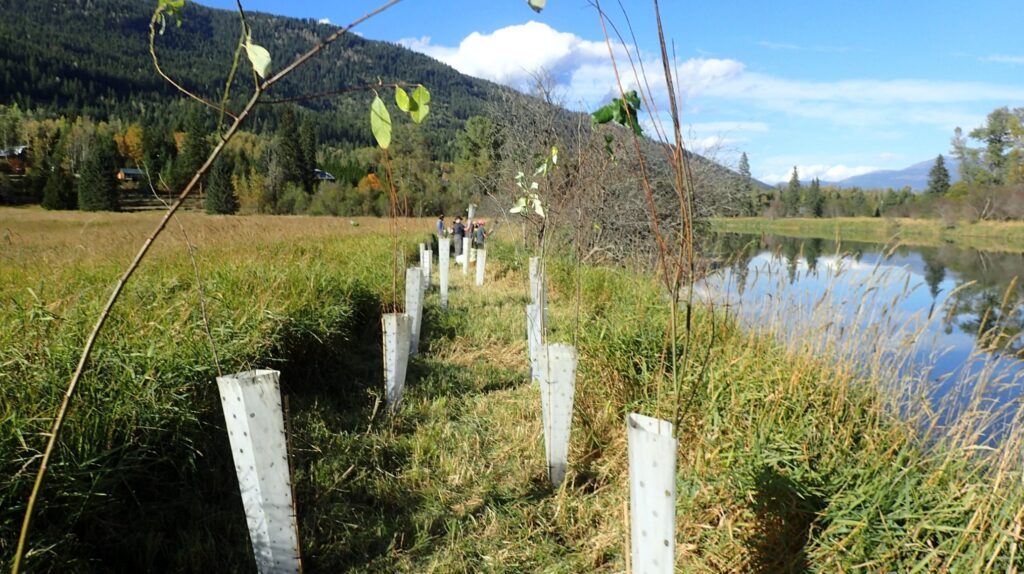Awarded to Slocan River Streamkeepers to conduct nature-based restoration projects along the Slocan River to improve aquatic and riparian health and aid in water, wildlife, and habitat conservation.
PROPONENT: Slocan River Streamkeepers

Slocan River Streamkeepers Photo
DESCRIPTION: The Slocan River has been historically impacted by mining, logging, agriculture, residential and commercial development, railroad and highway construction, and other human activities. The historical removal of trees along the Slocan River, coupled with floods and droughts worsened by climate change, has increased bank erosion which negatively impacts fish habitat and water quality. Preserving and restoring fish habitat is crucial, as fish populations have been in decline due in part to the dams downstream of the Slocan River. Planting native riparian trees is both a technically effective and cost-effective erosion reduction strategy; deep roots will eventually hold the riverbank in place, without resorting to more damaging strategies that channelize the stream, such as installing riprap, which doesn’t have the same holistic advantages that planting trees does. Finally, when the trees have matured and begin to decay, they will fall into the river, providing even more fish habitat and erosion protection in the form of large woody debris.
OBJECTIVE: This project will include work on 3 properties that have had some sections of riparian restoration work completed in the past. It is important to continue the work and build on successful projects for the benefit of fish and wildlife. The goal of this project is to create habitat for wildlife (including species-at-risk), improve aquatic health, and restore the riparian cottonwood ecosystem along the Slocan River.
Specific project objectives are to:
1) Plant 1,000 native trees along the Slocan River, on 3 separate properties, adding up to over 1 ha of restored riparian area or over 700 m of riverbank;
2) Interplant the 3 sites with 1,000 dormant cuttings (live stakes);
3) Protect plantings from beavers and browsers by installing tree protectors or small fence enclosures;
4) Install 10 bird nesting boxes, including one for western screech-owl and one for Lewis’s woodpecker (both species-at-risk) for short term wildlife habitat;
5) Maintain sites in the growing season by cutting back invasive vegetation; and
6) Monitor success (% of tree survival, % of nesting boxes occupied by birds).

